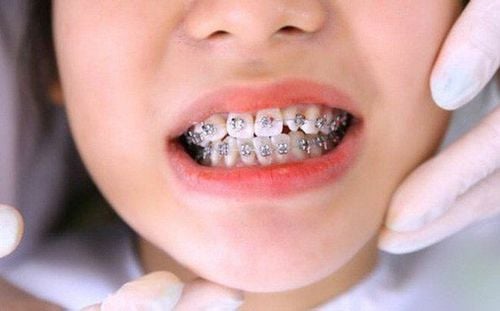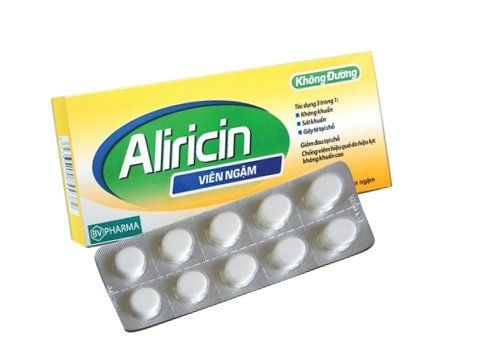This is an automatically translated article.
Poor oral hygiene can cause various problems from toothache, tooth decay, tooth sensitivity to dull teeth or more severe gum disease. However, with proper oral hygiene and regular check-ups, most common dental problems can be easily prevented.
1. Tooth decay
Cavities are areas of permanent damage in or around the tooth surface, resulting in small holes in the enamel, tooth discoloration. This is one of the most common dental problems that cause toothache.
The cause of tooth decay is due to plaque from foods with a lot of sugar or starch content deposited on the tooth surface. Bacteria in the mouth feed on sugars and starches, which in turn leads to the gradual deterioration of tooth enamel. This leads to tooth decay and most likely requires a filling. Although it can also be caused by bacteria that live in the mouth, the consumption of sugary drinks such as soda, frequent snacking and smoking are the main causes of tooth decay in children and adults.
Therefore, to prevent tooth decay, people need to:
Avoid foods with high sugar or starch content - foods and drinks such as soda, ice cream, cakes, cookies, etc. lots of starch and sugar. Make sure to brush your teeth thoroughly – if eating these foods, brush your teeth after eating to prevent plaque build-up. Gargle - if you can't brush your teeth right away, rinse your mouth with clean water. Drink more water - stay away from beverages other than water if possible. Manufactured drinks have chemicals and lots of sugar that cause plaque. Make an appointment with your dentist for regular dental checkups.

Sâu răng
2. Gum disease
Gum disease is one of the most common oral diseases experienced by adults. The disease has three stages of development starting from gingivitis. Gingivitis is a reversible gum disease that, if left untreated, can lead to a more serious problem called periodontal disease.
Periodontal disease must be treated as soon as possible. Otherwise, it will lead to stage 3 of gum disease, also known as advanced periodontal disease, which causes teeth to become loose.
Signs of gingivitis include:
Bleeding gums - gums that bleed easily when flossing or brushing. Bad breath - if you notice bad breath despite maintaining a strict oral hygiene routine, think of gingivitis. Swollen, red, or tender gums - healthy gums should be pink and snug around the base of the tooth. If you notice swelling, redness, or pain around the base of the tooth where the tooth comes in contact with the gum, see your dentist right away. Loose teeth - Loose teeth can be a sign of severe periodontal disease. Do not take it lightly because if treated as soon as possible, the risk of tooth loss will be reduced. Formation of pus - if pus is noticed around the root, this is a sign of a more serious infection that can easily spread to other parts of the mouth. Get treatment right away and your dentist will need an antibiotic prescription. Like all common dental problems, everyone can prevent gum disease. Since gum disease is also caused by bacteria present in plaque that attack the gum ligaments, it can be easily prevented with proper dental care habits.
3. Bad breath
There is nothing more embarrassing than bad breath. Sadly, bad breath, also known as halitosis, is a common dental problem of all ages. According to dental experts, bad breath is a common symptom of gum disease, tooth decay or oral cancer.
However, bad breath can also be caused by something ingested. There are several foods that cause bad breath such as garlic, onions, sweets or alcohol among many others.
This is why brushing your teeth after every meal helps control bad breath as well as other dental problems. Bring a small bottle of mouthwash if you can't brush right away. Or at least rinse your mouth with clean water immediately after eating. If the odor persists, see your dentist to rule out other serious oral conditions.

Hơi thở nặng mùi có thể do sâu răng hoặc một số vấn đề khác gây ra
4. Dry mouth
Dry mouth is a condition in which the salivary glands cannot produce enough saliva to keep the inside of the mouth moist. Saliva has antibacterial properties that help remove plaque from the tooth surface. Dry mouth is often caused by a number of factors such as smoking, chemotherapy, anti-secretory drugs, aging or stress.
Common symptoms of dry mouth can be as simple as chapped lips, mouth sores, but more serious symptoms can manifest as gum irritation and burning sensation in the mouth. The resulting lack of moisture in the mouth contributes to the accumulation of more plaque and ultimately tooth decay.
Although there is no absolute cure for dry mouth, drinking more water has been shown to help keep the mouth hydrated.
5. Crowded teeth
Crowded teeth are not only a cosmetic dental problem but can also cause alignment problems and can eventually cause temporomandibular disorders. Misaligned bite will cause maxillofacial abnormalities and may require surgery to correct.
This dental problem sometimes occurs naturally. When baby teeth fall out and new teeth grow in displaced positions, crowding can occur. On the other hand, during development, teeth can also be displaced which can eventually lead to rearrangement of the teeth.
Finally, braces are an appropriate treatment option for severely crowded and misaligned teeth. Depending on crowding, orthodontists can even reduce teeth, creating space and traction to help teeth move into a more reasonable position.
6. Root Infections
Root canal infection occurs when bacteria infect the root of the tooth, get in between the teeth and attack the pulp tissue inside. This condition is quite serious, causing a painful and very uncomfortable toothache.
Eventually, an abscess will form at this site indicating a more severe root infection. At this time, the doctor will need to take the pulp of the tooth, suck all the pus and infected tissue out to ensure clean teeth. After that, the tooth surface will be sealed with a hard material, which helps prevent bacteria from entering the root of the tooth again as well as strengthens the tooth, improving the dull tooth.

Nhiễm trùng chân răng có thể gây đau răng và khó chịu cho người bệnh
7. Lost teeth
The above common dental problems can lead to tooth loss . This eventual periodontal disease is the result if the above conditions are not treated immediately. Cavities may also require extraction if the tooth can no longer be saved. The same goes for root infections.
Therefore, once a tooth has been lost, the patient has only two options: using dentures or dental implants. Compared with dentures, dental implants are a more modern technique with an artificial tooth that will be permanently attached to the jawbone in a durable and long-term way. From there, the new teeth look like natural teeth and fully restore the function of the teeth.
8. Oral cancer
Oral cancer is the deadliest oral problem that a patient can face, considered a type of head and neck cancer. Furthermore, the mortality rate from oral cancer is higher than that of other cancers because it does not present any pain or symptoms before.
This pathology usually begins inconspicuously with a small pale pink mass in the mouth. This can hardly be noticed because the mouth is always naturally pink or red. That's why routine dental visits are often helpful.
In short, common dental problems can be prevented and completely avoided if everyone is responsible for their oral health. Specifically, maintaining oral hygiene by staying away from foods that contribute to plaque formation is also a step in overall health care. In addition, if any abnormality is noticed, it is advisable to consult a dentist for early preventive measures.
Please dial HOTLINE for more information or register for an appointment HERE. Download MyVinmec app to make appointments faster and to manage your bookings easily.




